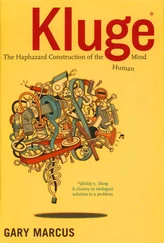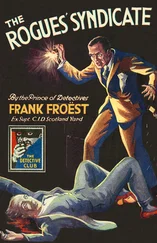1 ...8 9 10 12 13 14 ...18 It would be this discovery, together with many associated extrapolations to microbiology and genetics, that would lead to all three scientists – Delbrück, Luria and Hershey – sharing the Nobel Prize in 1969.
Meanwhile, back in 1947, it was the dynamic energy and infectious charm of Luria, and the innovative genius of Delbrück, that proved most influential to the youthful Watson after his arrival into Indiana University. Still fascinated by the mystery of the gene, it was his hope that the mystery might be solved without his bothering to learn any of the complex physics or chemistry.
It is instructive to discover, from conversations between Luria and Watson, that there was no ignorance at Bloomington about Avery’s discovery of DNA. Luria had visited Avery in 1943, prior to the publication of the key paper, when he had the opportunity of discussing Avery’s findings in detail. He would recall Avery to Watson as an utterly non-pompous scientist, precise in his language, with a tendency as he spoke to close his eyes and rub his bald head – ‘every bit of a chemist, even though he was an MD’. Watson would take his cue from Luria, writing, in The Double Helix , how Avery had shown that hereditary traits could be transmitted from one bacterial cell to another by purified DNA molecules. Given the fact that DNA was known to occur in the chromosomes of every type of living cell, ‘Avery’s experiments strongly suggested that … all genes were composed of DNA.’
In the autumn of 1947, Watson, still just 19, took Luria’s course in bacteriology and Muller’s in X-ray-induced gene mutation. Faced with the choice of entering into research with Muller on Drosophila or with Luria on microbes, he plumped for Luria, despite the fact that the Italian scientist had a reputation among the graduate students for having a short fuse with dimwits. Watson would subsequently adopt his patron’s example. Delbrück was a heroic figure to Watson because he had inspired Schrödinger’s ideas in the inspirational book. Watson was delighted when Luria introduced him to Delbrück when the eminent German physicist paid a visit to Bloomington.
Luria set Watson a PhD dissertation on the pathological effects on phage of exposure to X-rays. The work proved so mundane that Watson would barely mention it in his biography. But his obsession with the gene was undimmed. By the summer of 1949, his thesis nearing completion, he had the itch to travel to Europe. Luria arranged a Merck Fellowship from the National Research Council – three thousand dollars for the first year, potentially renewable. In May the following year, with his PhD under his belt, he sailed for Denmark, where he had been assigned to study nucleotides with a biochemist named Herman Kalckar. Kalckar was a gifted scientist but his interest was neither the gene nor the bacteriophage. A disenchanted Watson switched his attentions to another Dane, and a member of the phage group, Ole Maaløe, who was working on the transfer of radioactively-tagged DNA from phages to their viral offspring.
Out of the blue, Kalckar accepted a short-term project in the Zoological Station in Naples. He suggested that Watson might tag along. Though he had little interest in marine biology, Watson was delighted to acquiesce. He hoped to warm himself in the Italian sun. But he was disappointed to find Naples chilly, with no heater in his room on the sixth floor of a nineteenth-century house. ‘Most of my time I spent walking the streets or reading journal articles … I daydreamed about discovering the secret of the gene, but not once did I have the faintest trace of a respectable idea.’
Here, by happenstance, he attended a lecture in the Zoological Station given by an English scientist named Maurice Wilkins. The lecture could hardly have excited him in prospect, knowing that most of it would be about the biochemistry of proteins. ‘Why should I get excited learning boring chemical facts as long as the chemists never provided anything incisive about the nucleic acids?’
But he took the risk and attended anyway.
Tall, bespectacled, asthenic and somewhat diffident in manner, you might have expected Wilkins’ presentation to bore the restless and impatient Watson. But it did not. To begin with, it was delivered in a language that Watson readily understood. And for all of his diffident manner, Wilkins kept to the point. Then suddenly, close to the end of the lecture, a projected slide jarred Watson to full attention. On the screen was a photograph that showed something Wilkins called an X-ray diffraction pattern of DNA that had been taken in the King’s College laboratory in London. Watson would subsequently admit that he knew nothing about X-ray crystallography. He hadn’t understood a word of what he had read about it in the scientific journals and he thought that much of what the ‘wild crystallographers’ were claiming was very likely baloney.
But now here was Wilkins mentioning in passing that this was the clearest picture of DNA that he and his colleagues had yet obtained from their X-ray studies. In the same audience was the Leeds-based English physicist, William Astbury, who had pioneered X-ray diffraction studies of biological molecules, and who had produced the first X-ray pictures of DNA. Astbury would subsequently confirm that no one had ever shown such a sharp, discrete set of reflections from the DNA molecule as Wilkins then projected onto the screen. ‘There was nothing like it in the literature.’ In explaining the picture, Wilkins suggested that DNA might be thought of as a crystalline substance.
Watson was electrified to hear Schrödinger’s prophecy confirmed. He sat in a daze of wonderment as Wilkins went on to explain that if and when we understood the structure of DNA, then we might be in a better position to understand how genes worked. Watson was now asking himself some pertinent questions. Who was this interesting English scientist, Wilkins? And how could he get to join his team at King’s College in London?
*
Maurice Hugh Frederick Wilkins was not, in fact, English, as Watson initially surmised. He was born in Pongaroa, New Zealand, where his father, Edgar Henry, was a practising doctor. The family were Anglo-Irish in origins, hailing from Dublin, where Maurice’s paternal grandfather had been headmaster of the high school and his maternal grandfather chief of police. On leaving New Zealand the family first returned to Ireland, then headed for London, where Dr Wilkins was later to do his pioneering work in public health.
Maurice had had a natural scientific curiosity even as a boy, and it was this curiosity that led to his studying physics as part of his BA at Cambridge University, after which he worked for his PhD under John Turton Randall (later knighted), a physicist who played a leading role in the development of radar during the war.
As a postgraduate, Wilkins moved to the University of Birmingham, following the posting of his Cambridge tutor, Randall, where the two scientists continued their collaboration on radar. But then, out of the blue, Wilkins found himself dispatched to the United States to work on the Manhattan Project. His purpose was to figure out how to purify suitable isotopes of uranium from impure sources, to make them suitable for the atomic bomb. In February 1944 Wilkins crossed the dangerous waters of the Atlantic on the Queen Elizabeth , heading for the University of Berkeley, California. Here he made a modest contribution to the development of the atomic bomb. However, the subsequent destruction of Hiroshima and Nagasaki by the very weapons that he had worked on left Wilkins somewhat unsettled in conscience.
After the war Wilkins returned to England, where he ended up as assistant director of the new Biophysics Unit at King’s College London, funded by the Medical Research Council, and where his former boss, Randall, was now the Wheatstone Professor of Physics. The new departmental remit was to apply the experimental methods of physics to important biological problems. This would result in Wilkins developing a relationship with Watson and Crick and joining the search for the molecular code of DNA. It would also involve him in a somewhat infamous strained working relationship with the X-ray crystallographer Rosalind Franklin.
Читать дальше












